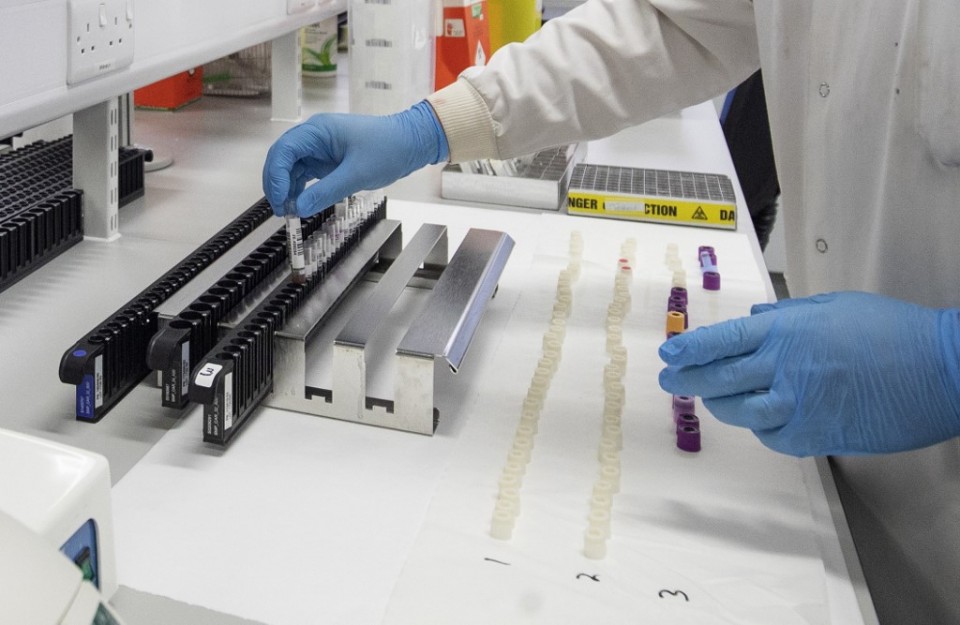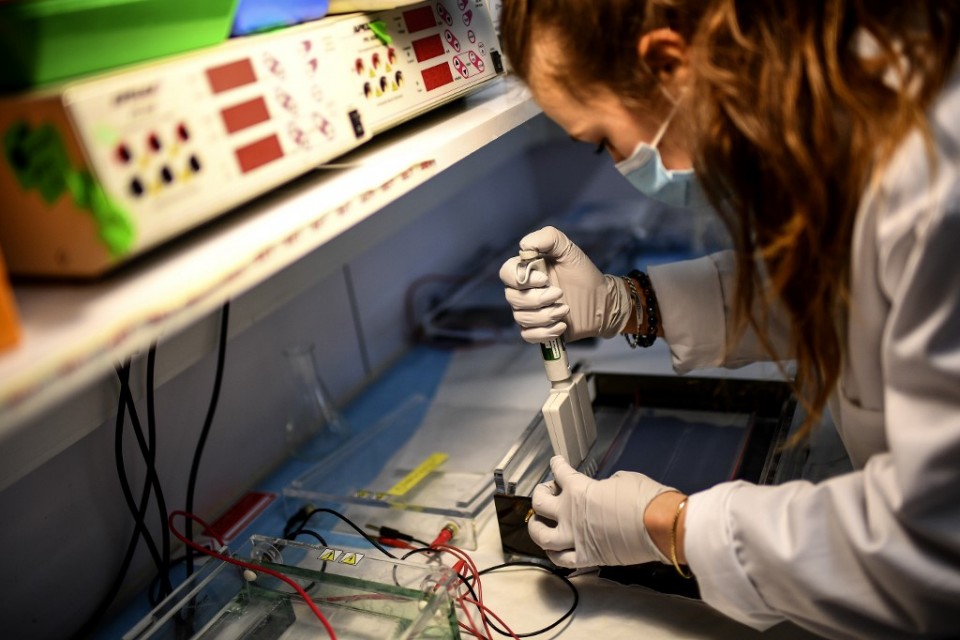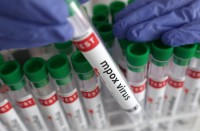
by Kelly MACNAMARA
Agence France Presse
PARIS, France (AFP) — To monitor changes to the coronavirus that could supercharge the pandemic or render vaccines less effective, scientists must sequence its genetic code to catalogue potentially dangerous mutations as they emerge.
But so few countries are conducting and sharing surveillance that experts are as worried about the mutations they cannot see as those they can.
Publication of the first genomic sequence of SARS-CoV-2 in January last year, at the very outset of the pandemic, allowed scientists to identify it as a new coronavirus, and begin developing diagnostic testing and vaccines.
Since then, tens of thousands of sequences have been uploaded on public databases, enabling mutations to be tracked with a degree of detail and a speed never achieved before.
But the lion’s share of this information has come from just one country: Britain.
As of mid-January, GISAID — a major data sharing platform originally created to monitor influenza — had received 379,000 sequences.
Of these, 166,000 were from Britain’s Covid-19 Genomics UK (COG-UK), a partnership between health authorities and academic institutions.
“This is the first time we are ever seeing how a pathogen evolves at this scale,” said Ewan Harrison, Director of Strategy and Transformation at COG-UK and a fellow at the Wellcome Sanger Institute where much of the sequencing is being done.
“We are learning that these mutations accrue way faster than we thought.”

Currently the programme is sequencing 10,000 genomes a week — roughly six percent of known cases in Britain although that fluctuates — and the plan is to double that.
“The UK blows everyone else out of the water,” said Emma Hodcroft, an epidemiologist at the University of Bern and co-developer on the Nextstrain virus tracking project.
“To me, this has been the moonshot of the pandemic, alongside the vaccines.”
Denmark, she noted, also routinely sequences and shares data, but the information coming from most other countries is sporadic at best.
Sequencing has identified distinct variants — strains that have acquired clusters of new mutations — in Britain, South Africa and Brazil in recent weeks.
The new, fast-spreading variant in the UK is “like a mini-pandemic within the pandemic”, said Harrison.
But without systematic monitoring, he added, scientists might still not have figured out it was a “game changer”.
Early warning did not stop the variant spreading — it has been detected in dozens of countries. But it has allowed other nations to prepare.
Without the warning from UK scientists, the world would probably be flying blind, said Hodcroft.
“If this was expanding in another country, we would just be looking at whatever country it was and going: ‘Oh, they’re having a bad rise in cases, I guess people aren’t following the guidelines’,” she told AFP.
Other variants have become visible only when they spread internationally from their point of origin.
Earlier this month, for example, a new strain — carrying a mutation, known as E484K, that researchers fear could evade immunity — was identified in Japan in people arriving from Brazil.
– ‘Eyes and ears’ –
The World Health Organization has said better sequencing capacity is a worldwide priority.
Maria Van Kerkhove, the WHO’s Covid-19 technical lead, recently described the number of sequences shared so far as “astounding”, but said they were coming from just handful of countries.
“Improving the geographic coverage of sequencing is critical for the world to have eyes and ears on changes to the virus,” she told an online forum.

New WHO guidance said a “revolution” in virus genomic investigation has helped build a better understanding of everything from Ebola to influenza.
And now, it said: “For the first time, genomic sequencing can help to guide the public health response to a pandemic in near-real time.”
When another coronavirus, SARS, began spreading in 2002, only three genome variants were publicly shared in the first month, and 31 by month three.
This time, six genomes were available to researchers worldwide a few weeks after the virus emerged. Within six months there were 60,000 variants published.
Initially the new coronavirus did not show much genetic diversity, said Hodcroft, even as it “exploded across Europe” due mainly to widespread travel.
But that lack of mutation was an important clue in itself.
“We were able to see that it really did seem to originate in China, because all the other sequences that were detected around the world nested within the diversity of the Chinese sequences,” she told AFP.
During the summer of 2020 new strains emerged, displacing the earlier incarnations of the virus.
– Emerging mutations –
Mutations are to be expected in viral evolution and occur when a pathogen infects someone and sets about replicating itself.
Most of these new strains confer no advantage to the virus, and some are even detrimental. But occasionally a mutation increases infectiousness or causes more severe illness.
SARS-CoV-2 picks up changes at a slower rate than some other viruses, like HIV or influenza. But the more people a virus infects, the greater the opportunity for mutation.
This becomes even more likely in someone with a chronic illness — an extended exposure to a weakened immune system gives the virus more time to rack up multiple mutations.
Harrison said this may be how the new variant emerged in the UK, and researchers are now sequencing tests from immunocompromised patients, as well as people whose vaccine failed.
– ‘New vision’ –
Systematic, countrywide sequencing has given researchers new insights into viral transmission.
In one case, it helped identify a minibus as the culprit in a hospital outbreak.
On a wider scale, an analysis of tens of thousands of SARS-CoV-2 sequences, published in Science this month, found that abundant travel and virus imports to the UK at the beginning of the epidemic seeded more than a thousand transmission lineages.
The next step is testing how different mutations affect transmission, disease severity, and vaccine effectiveness, and predicting as quickly as possible how a new variant might behave.
The WHO has said global sequencing will help “better understand the world of emerging pathogens and their interactions with humans and animals in a variety of climates, ecosystems, cultures, lifestyles and biomes”.
“This knowledge will shape a new vision of the world and open new paradigms in epidemic and pandemic prevention and control.”
But sequencing at scale is logistically complex.
“There were weeks when things didn’t work properly, because you’re building the systems from scratch at pace, mid-pandemic,” Harrison said.
The Sanger Institute stores the tens of thousands of samples it receives every day in huge shipping container freezers and had to build robotics infrastructure to help sort through them.
Legal concerns meant COG-UK decided to share minimal information on the sequences in order to make them public, Harrison said. The issue was a hurdle for other countries, particularly those reliant on private healthcare providers retaining ownership of data.
Costs are also a challenge in many parts of the world, but Hodcroft said richer nations like the United States and those in Europe have no excuse.
“There is no reason we don’t have coordinated sequencing responses, except… that we haven’t decided to do it,” she said.
© Agence France-Presse







